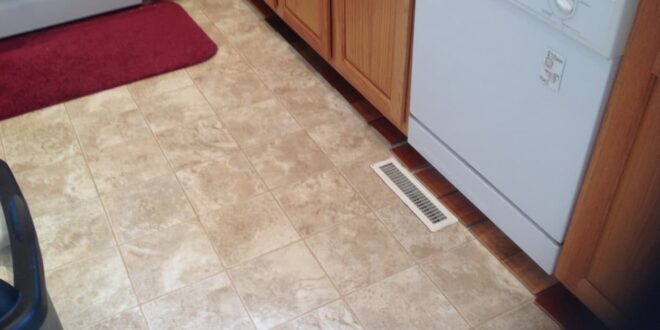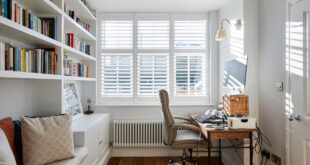Sheet Vinyl Flooring: A Kitchen Revolution
The kitchen. It’s the heart of the home, the hub of activity, and often, the battleground against spills, splatters, and relentless foot traffic. Choosing the right flooring for this high-impact zone is crucial, and in recent years, sheet vinyl flooring has emerged as a compelling contender. But what exactly makes sheet vinyl such a popular choice for kitchens? Let’s dive deep and explore the world of sheet vinyl flooring, uncovering its advantages, disadvantages, installation tips, and design possibilities.
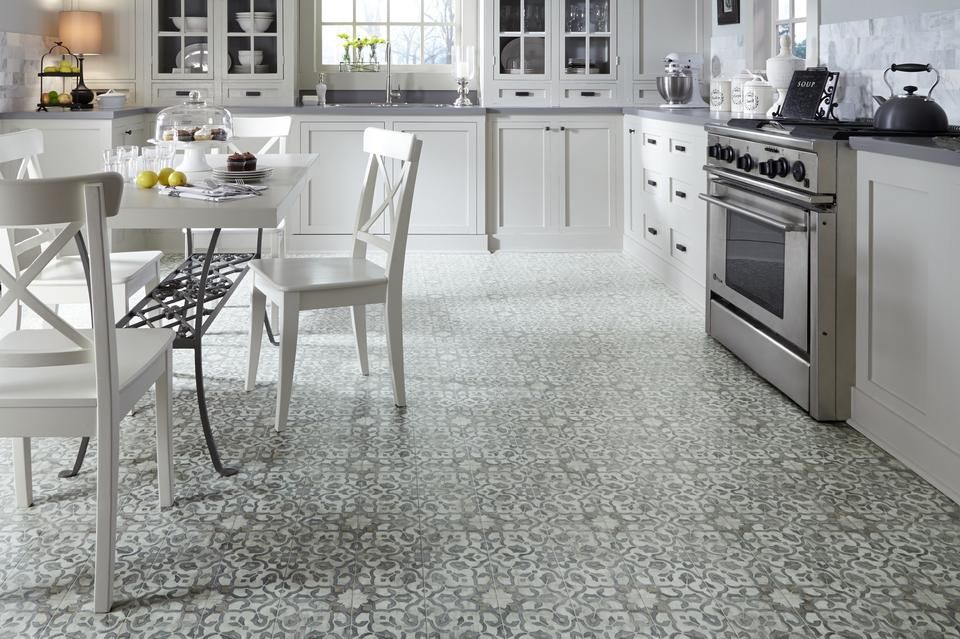
Forget those outdated perceptions of vinyl flooring as cheap and unstylish. Modern sheet vinyl has undergone a remarkable transformation. Thanks to advancements in technology and manufacturing, it now boasts incredible realism, mimicking the look of wood, tile, and even stone with stunning accuracy. But the appeal of sheet vinyl goes far beyond aesthetics. It’s also incredibly practical, offering a winning combination of durability, affordability, and ease of maintenance, making it a perfect fit for the demands of a busy kitchen.
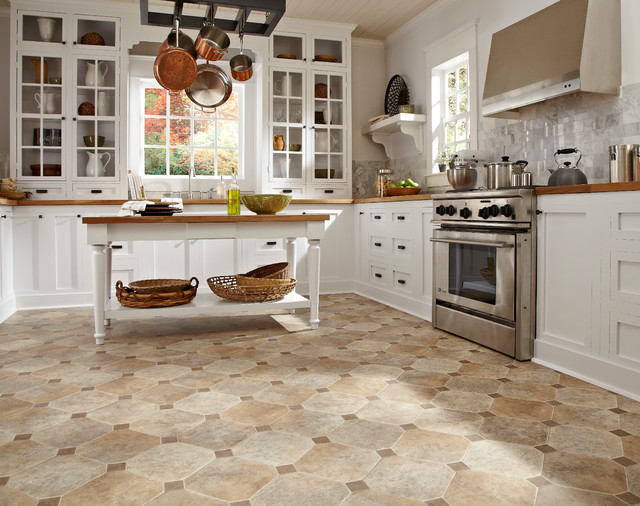
Why Choose Sheet Vinyl for Your Kitchen? The Core Benefits
Let’s break down the key advantages of sheet vinyl flooring that make it a standout option for kitchen renovations:
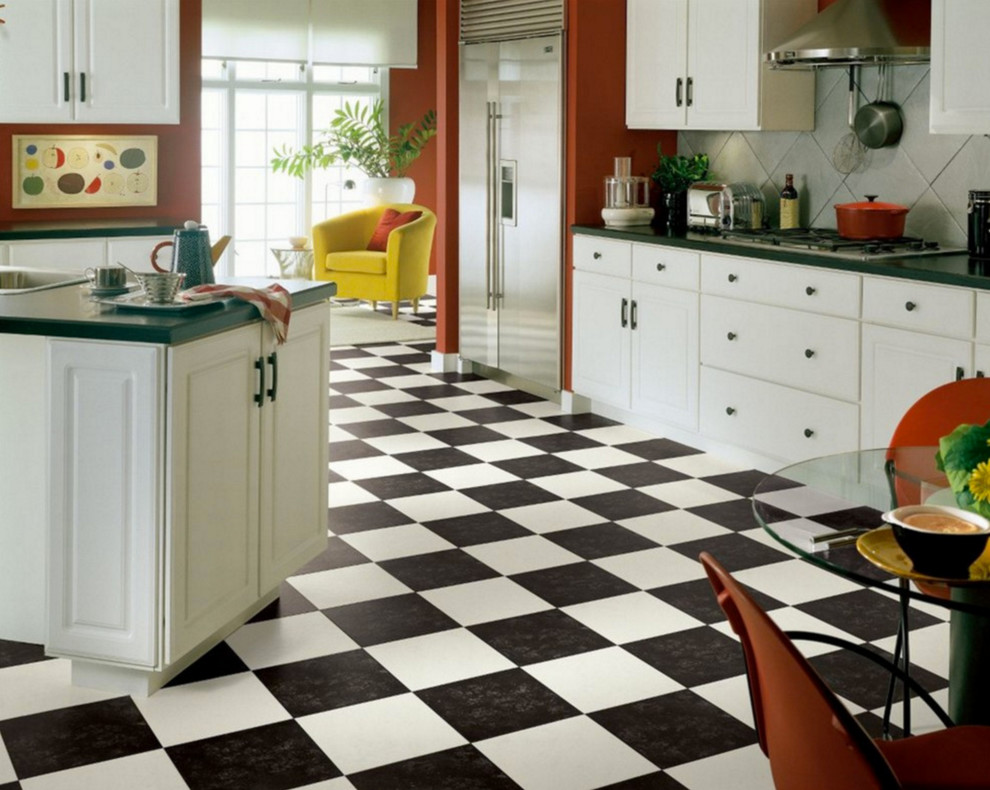
Water Resistance: A Kitchen’s Best Friend
In a kitchen environment, water resistance is paramount. From accidental spills to overflowing sinks, moisture is a constant threat. Sheet vinyl is inherently waterproof, meaning that water cannot penetrate its surface and seep down to the subfloor. This is a significant advantage over other flooring options like hardwood or laminate, which can warp, buckle, or develop mold and mildew when exposed to moisture. With sheet vinyl, you can wipe away spills with confidence, knowing that your floor is protected.
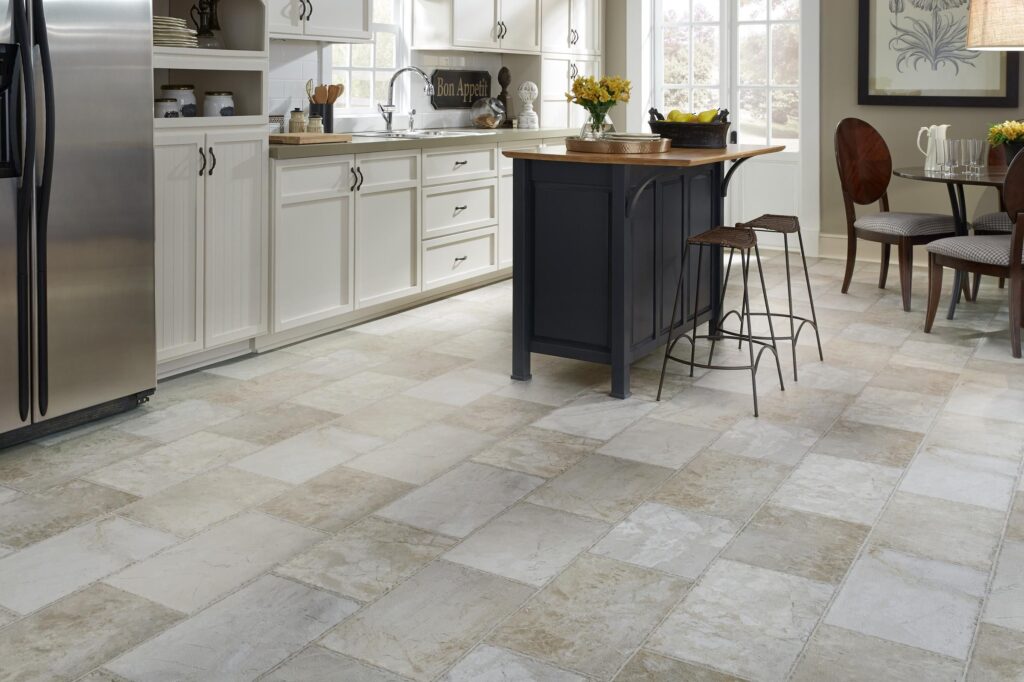
Durability and Longevity: Built to Last
The kitchen floor endures a lot of abuse. From dropped pots and pans to scuff marks from chairs and shoes, it’s constantly subjected to wear and tear. Sheet vinyl flooring is remarkably durable and can withstand the rigors of daily kitchen activity. Look for sheet vinyl with a thick wear layer, which is the protective top coating that resists scratches, stains, and fading. A thicker wear layer will provide greater longevity and ensure that your floor looks beautiful for years to come. High-quality sheet vinyl can easily last for 10-20 years with proper care.
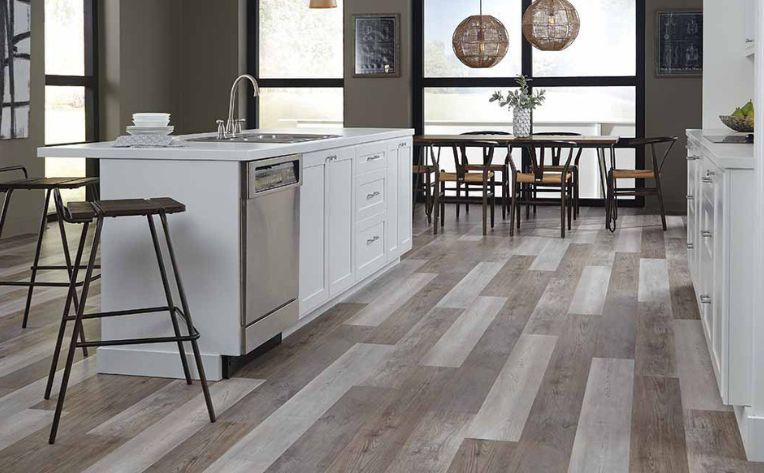
Affordability: Budget-Friendly Flooring
Kitchen renovations can be expensive, so finding ways to save money without sacrificing quality is essential. Sheet vinyl flooring is one of the most affordable flooring options available, making it an attractive choice for budget-conscious homeowners. Compared to hardwood, tile, or stone, sheet vinyl is significantly less expensive to purchase and install. This allows you to allocate your budget to other areas of your kitchen remodel, such as new appliances or countertops. The lower initial cost combined with its long lifespan makes sheet vinyl a smart investment.
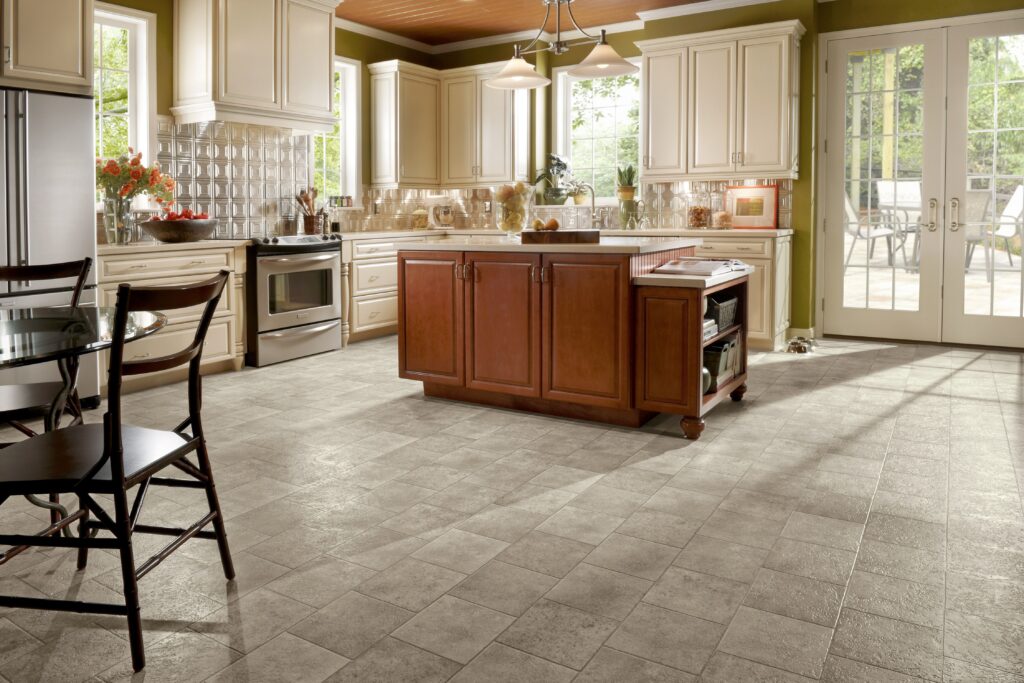
Easy Maintenance: Spend Less Time Cleaning
Let’s face it: no one enjoys spending hours cleaning the kitchen floor. Sheet vinyl is incredibly easy to maintain, requiring only regular sweeping or vacuuming to remove dirt and debris. For deeper cleaning, a damp mop with a mild detergent is all you need. Unlike tile, which requires grout cleaning, sheet vinyl has a seamless surface that prevents dirt and grime from accumulating. This makes it a hygienic and low-maintenance option for busy families.
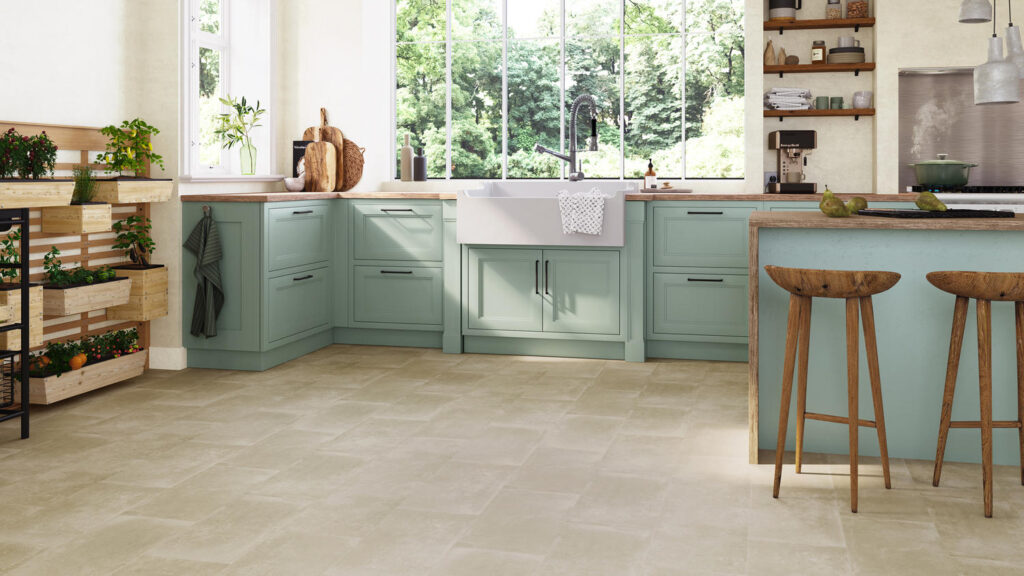
Comfort Underfoot: A Softer Touch
Standing for long periods in the kitchen can be hard on your feet and back. Sheet vinyl flooring has a slight give to it, providing a more comfortable surface to stand on compared to hard surfaces like tile or concrete. This can make a significant difference, especially if you spend a lot of time cooking or preparing meals. Some sheet vinyl options also come with a cushioned backing, which further enhances comfort and reduces noise transmission.
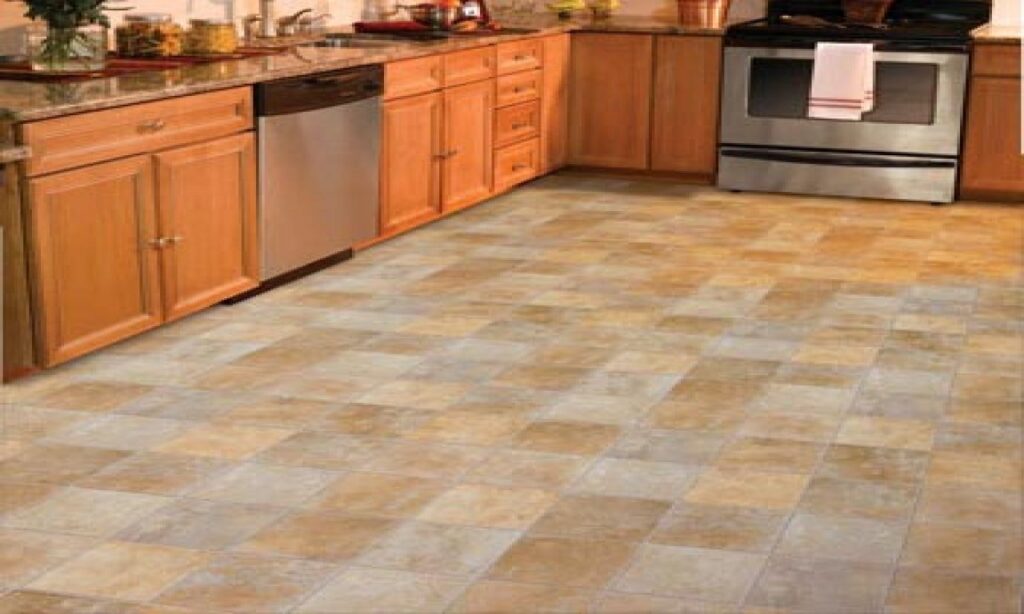
Design Versatility: Endless Style Possibilities
Gone are the days of limited design choices with vinyl flooring. Modern sheet vinyl comes in a vast array of colors, patterns, and textures to suit any kitchen décor. Whether you prefer a classic wood look, a contemporary tile design, or a bold geometric pattern, you’re sure to find a sheet vinyl option that complements your style. Advancements in printing technology have enabled manufacturers to create incredibly realistic visuals, mimicking the look of natural materials with stunning detail. You can even find sheet vinyl that replicates the look of distressed wood or hand-painted tiles.
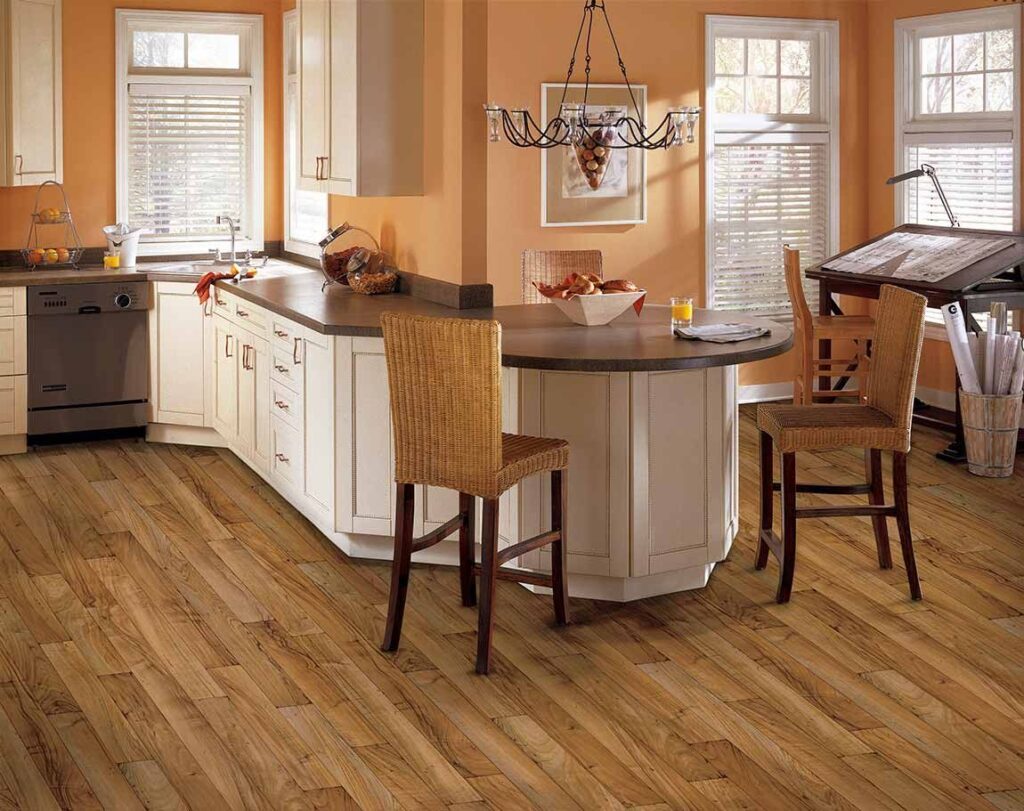
Understanding Sheet Vinyl: Construction and Types
To make an informed decision about sheet vinyl flooring, it’s helpful to understand its construction and the different types available:
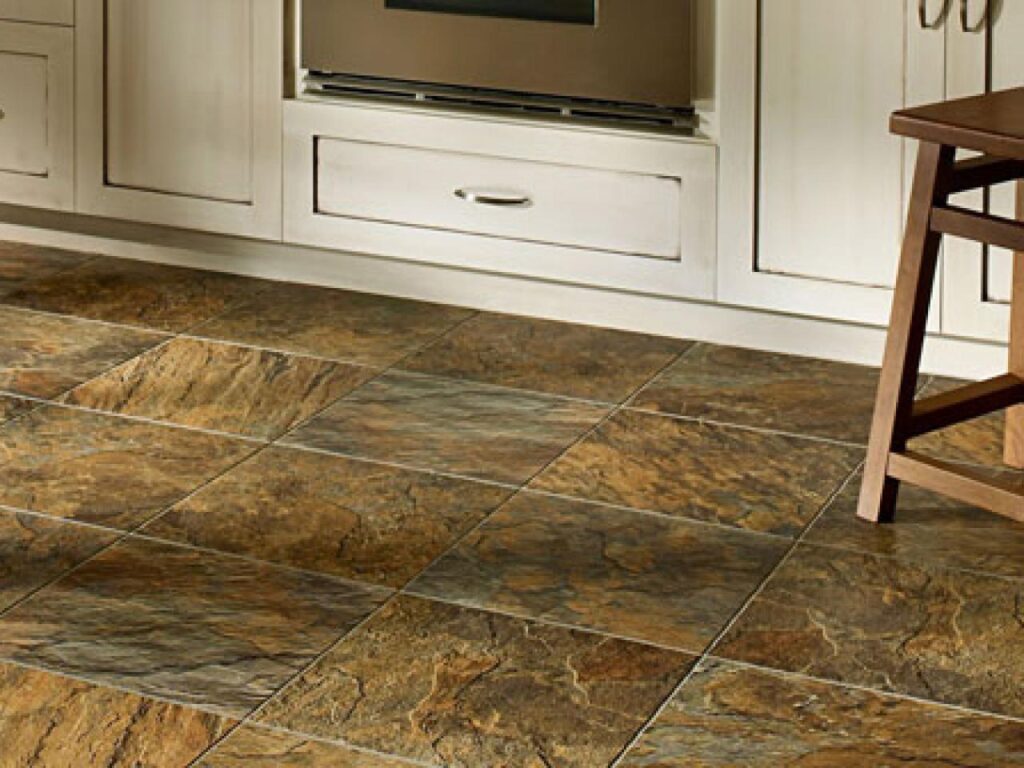
The Layers of Sheet Vinyl
Sheet vinyl flooring typically consists of several layers, each contributing to its performance and durability:
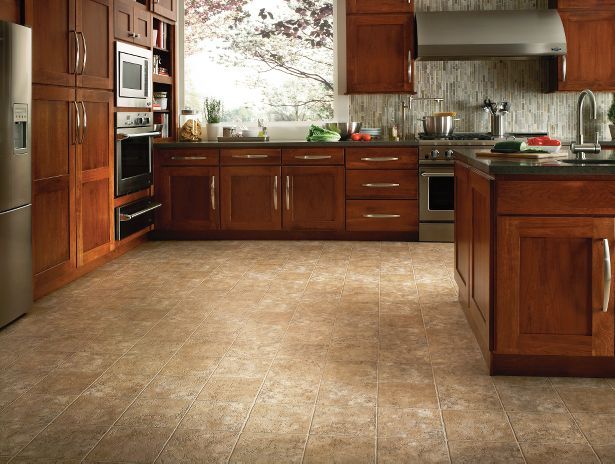
- Wear Layer: The top layer that protects the floor from scratches, stains, and fading. A thicker wear layer provides greater durability.
- Print Layer: This layer contains the design or pattern of the flooring. High-quality printing techniques create realistic visuals.
- Core Layer: Provides stability and support to the flooring.
- Backing Layer: Adds cushioning and comfort underfoot. Some sheet vinyl options have a felt or foam backing.
Types of Sheet Vinyl Flooring
While all sheet vinyl comes in large, continuous sheets, there are variations in construction and performance:
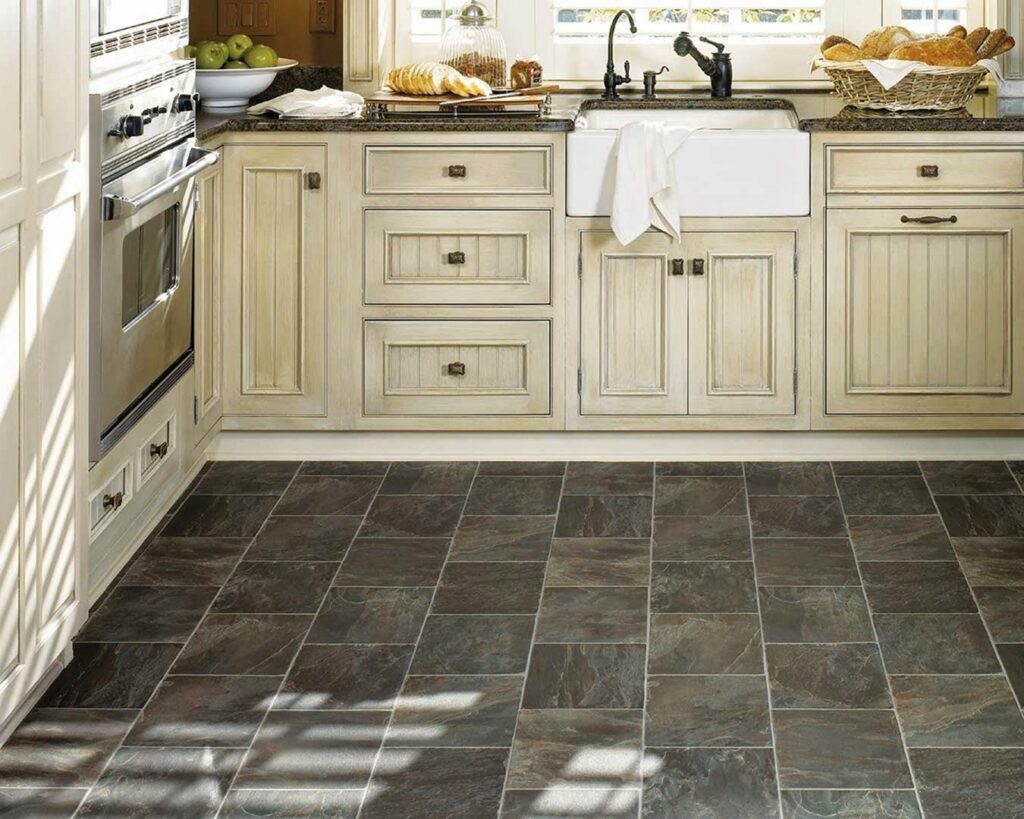
- Homogeneous Vinyl: Constructed of a single layer of material, offering consistent color and pattern throughout. This type is highly durable and resistant to wear, making it a good choice for high-traffic areas.
- Heterogeneous Vinyl: Composed of multiple layers, each with different properties. This type offers greater design flexibility and can incorporate cushioning layers for added comfort.
- Inlaid Vinyl: Features a pattern that is embedded into the vinyl rather than printed on the surface. This creates a more durable and long-lasting design that is less prone to wear.
The Drawbacks of Sheet Vinyl: Considering the Downsides
While sheet vinyl offers numerous advantages, it’s important to consider its potential drawbacks:
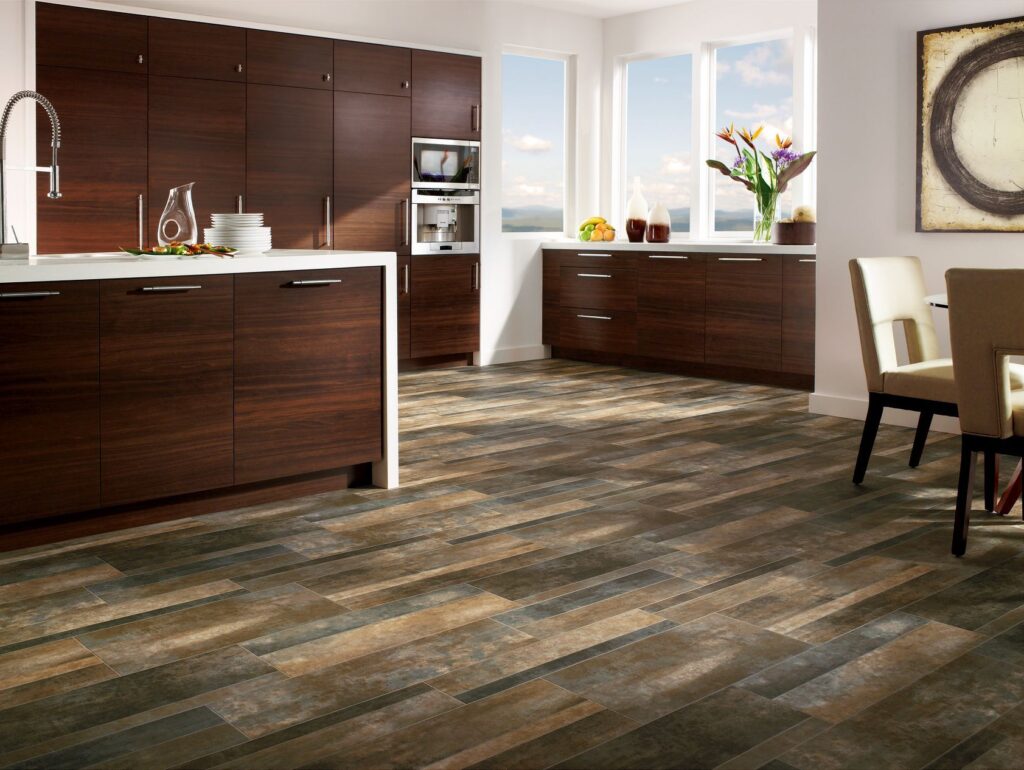
Potential for Tears and Dents
Although durable, sheet vinyl can be susceptible to tears or dents from sharp objects or heavy impacts. Dropping a heavy pot or dragging furniture across the floor can potentially damage the surface. However, the risk of damage can be minimized by using floor protectors under furniture and taking care when handling heavy objects.
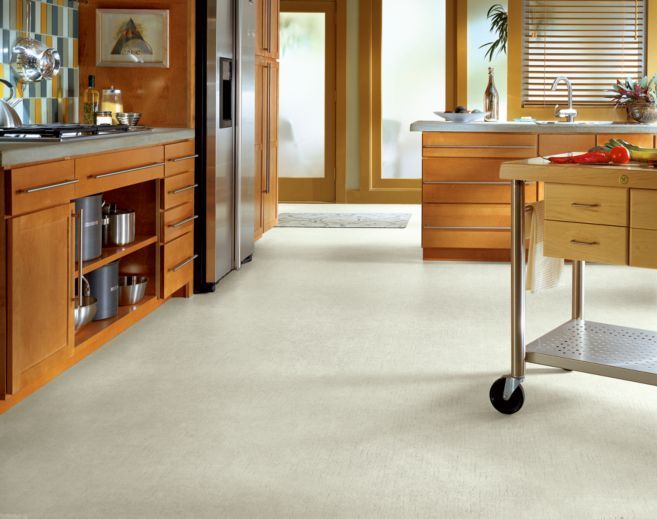
Installation Challenges
Proper installation is crucial for the performance and longevity of sheet vinyl flooring. Installing a large sheet of vinyl can be challenging, especially in kitchens with irregular shapes or obstacles. It’s essential to have a perfectly smooth and level subfloor to prevent bumps or imperfections from showing through the vinyl. For best results, consider hiring a professional installer who has experience working with sheet vinyl.
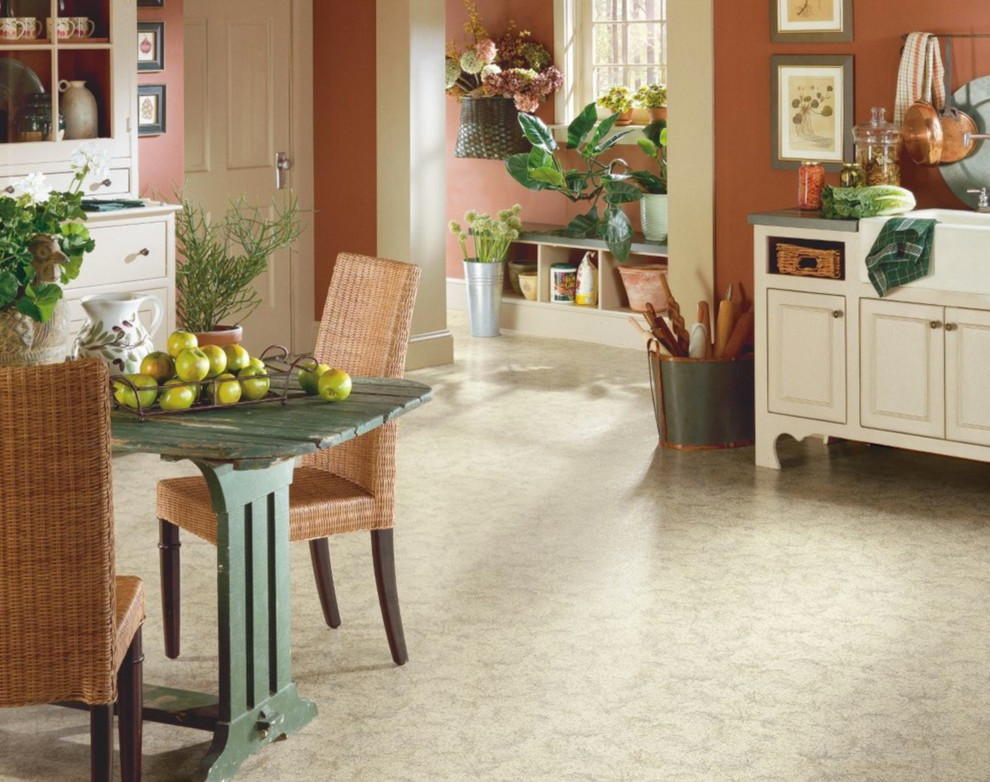
Repair Difficulties
While sheet vinyl is relatively easy to maintain, repairing damaged areas can be tricky. Unlike individual tiles or planks, it’s not possible to replace a small section of sheet vinyl. If a tear or dent occurs, you may need to replace the entire sheet, which can be costly and time-consuming. However, minor scratches or scuffs can often be repaired with vinyl repair kits.
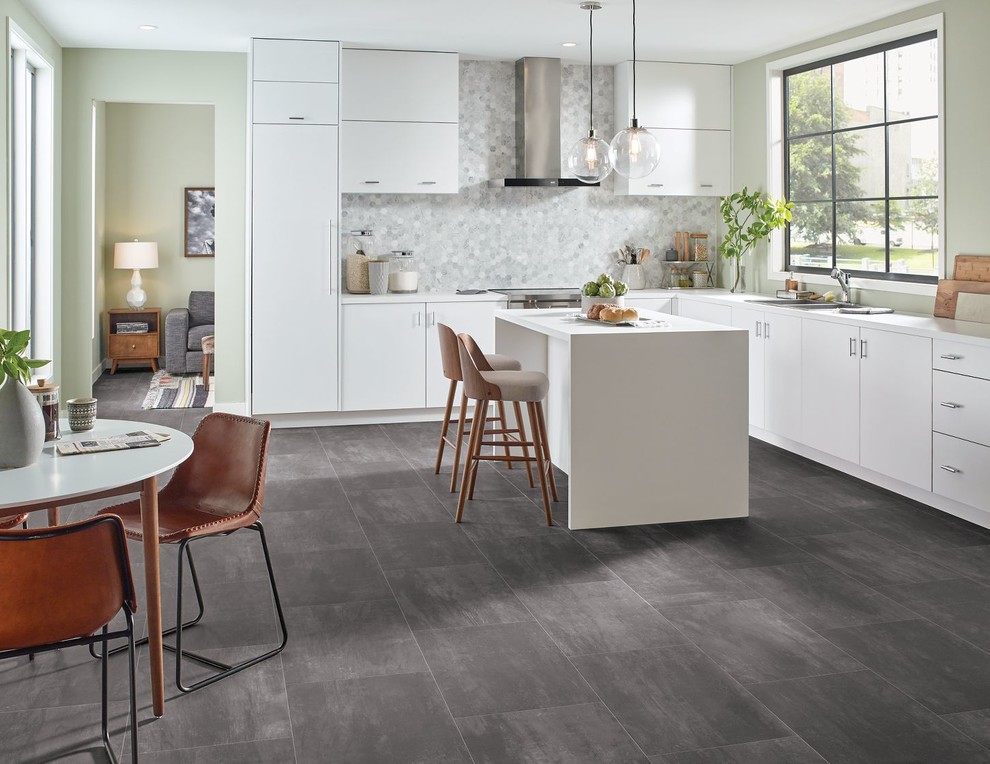
Not as Luxurious as Natural Materials
Although modern sheet vinyl can convincingly mimic the look of natural materials like wood or stone, it doesn’t quite replicate the feel and texture of the real thing. If you’re looking for the ultimate in luxury and authenticity, you may prefer natural materials like hardwood or marble. However, these materials come with a higher price tag and require more maintenance.
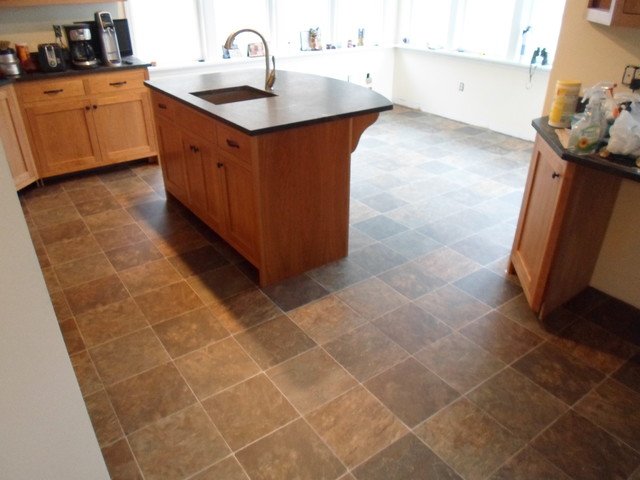
Installation: DIY or Hire a Pro?
Installing sheet vinyl flooring can be a DIY project for experienced homeowners, but it requires careful planning and execution. Here’s a breakdown of the installation process and considerations:
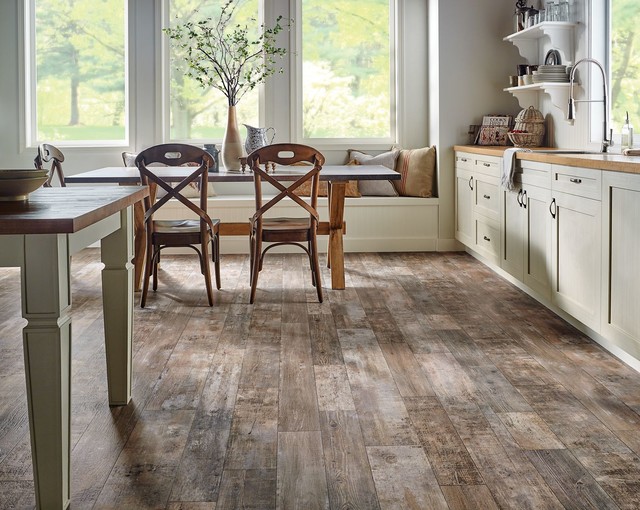
Preparing the Subfloor
The most crucial step in installing sheet vinyl is preparing the subfloor. The subfloor must be clean, dry, smooth, and level. Any imperfections, such as cracks, holes, or bumps, will show through the vinyl. Fill any holes or cracks with patching compound and sand down any uneven areas. If the subfloor is uneven, you may need to install a layer of underlayment to create a smooth surface.
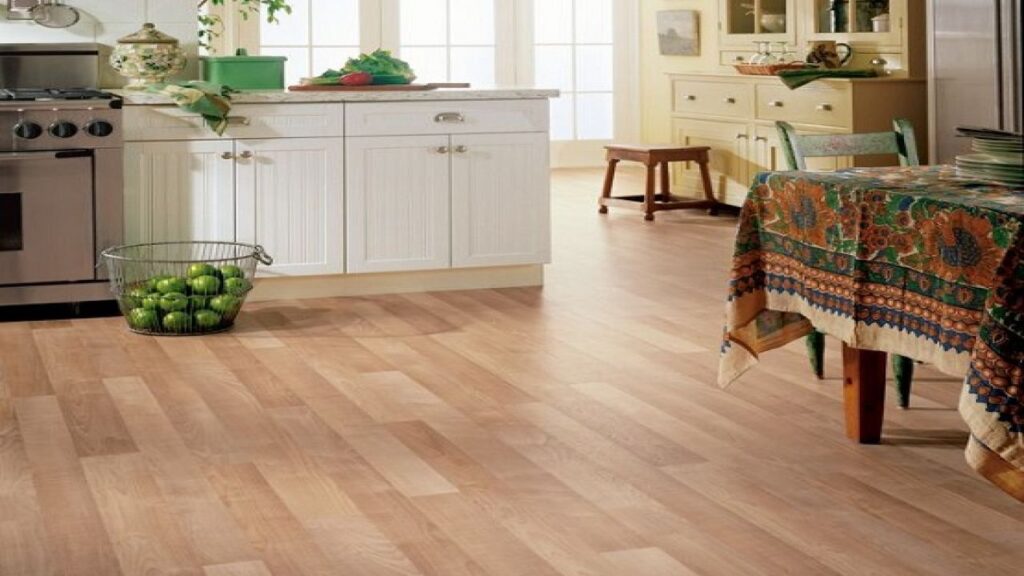
Cutting the Vinyl
Cutting the sheet vinyl to fit your kitchen requires precision and patience. Measure the room carefully and transfer the measurements to the vinyl. Use a sharp utility knife to cut the vinyl, leaving a slight excess around the edges. It’s better to cut too much than too little, as you can always trim away the excess later. Use a straight edge as a guide to ensure clean, accurate cuts.
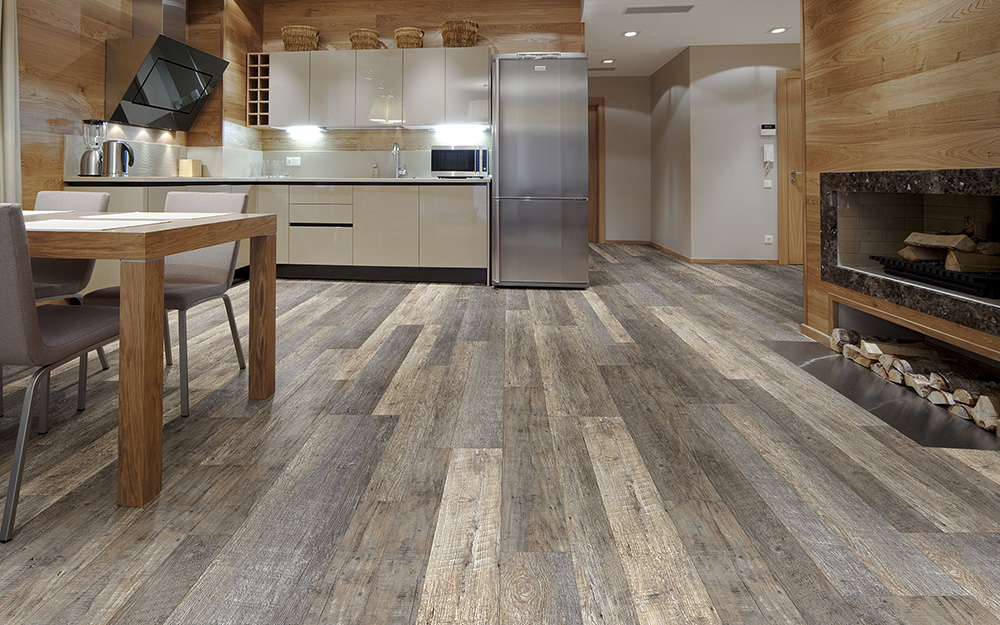
Adhering the Vinyl
Once the vinyl is cut to size, you’ll need to adhere it to the subfloor. There are two main methods of adhesion: full spread and perimeter bonding. Full spread involves applying adhesive to the entire subfloor, while perimeter bonding only applies adhesive around the edges of the room. Full spread provides a more secure bond and prevents the vinyl from shifting or buckling. Follow the manufacturer’s instructions carefully when applying the adhesive.
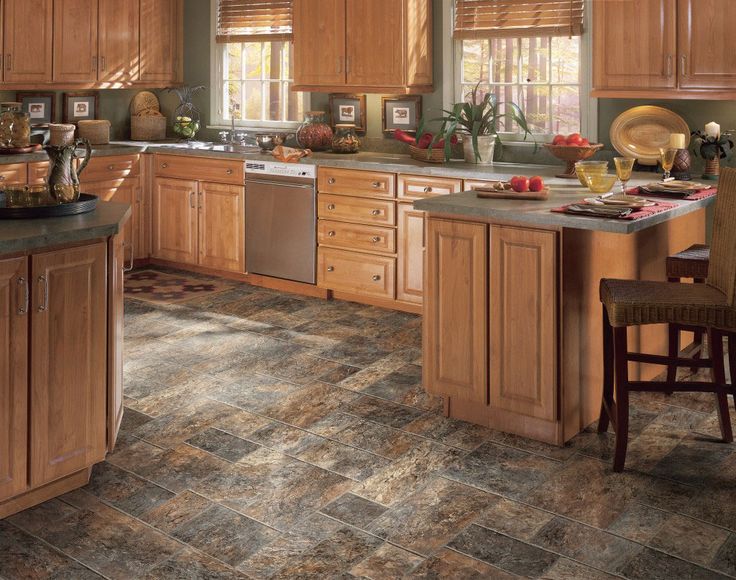
Finishing Touches
After the vinyl is adhered, trim away any excess around the edges of the room. Install baseboards or quarter-round molding to cover the edges of the vinyl and create a finished look. Use a seam sealer to seal the seams between sheets of vinyl, if necessary. Roll the floor with a heavy roller to ensure proper adhesion and remove any air bubbles.
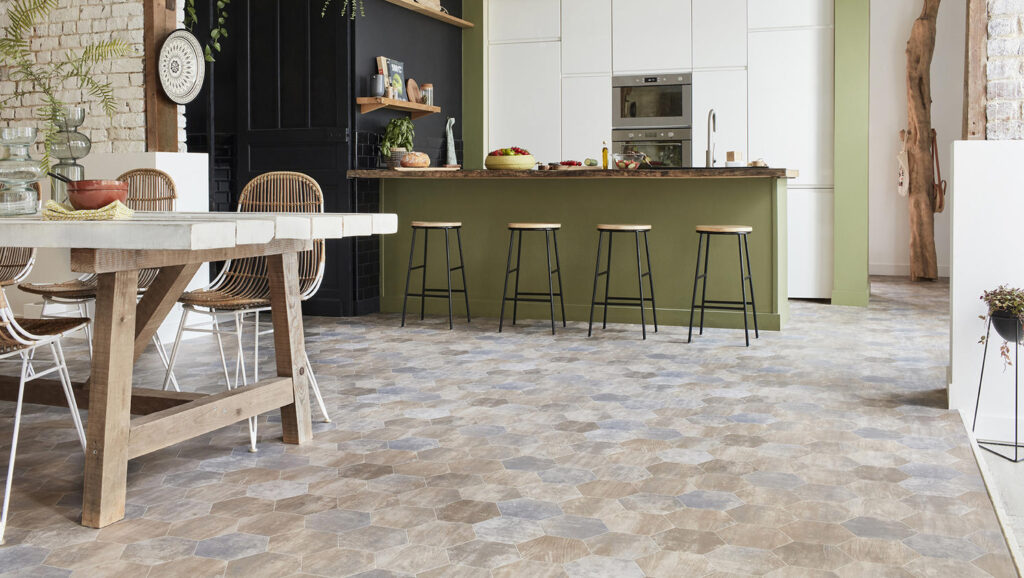
When to Hire a Pro
While DIY installation is possible, hiring a professional installer is often the best option, especially for larger or more complex kitchens. Professional installers have the experience, tools, and expertise to ensure a flawless installation. They can also handle any unexpected challenges that may arise, such as uneven subfloors or difficult layouts. Hiring a pro can save you time, money, and frustration in the long run.
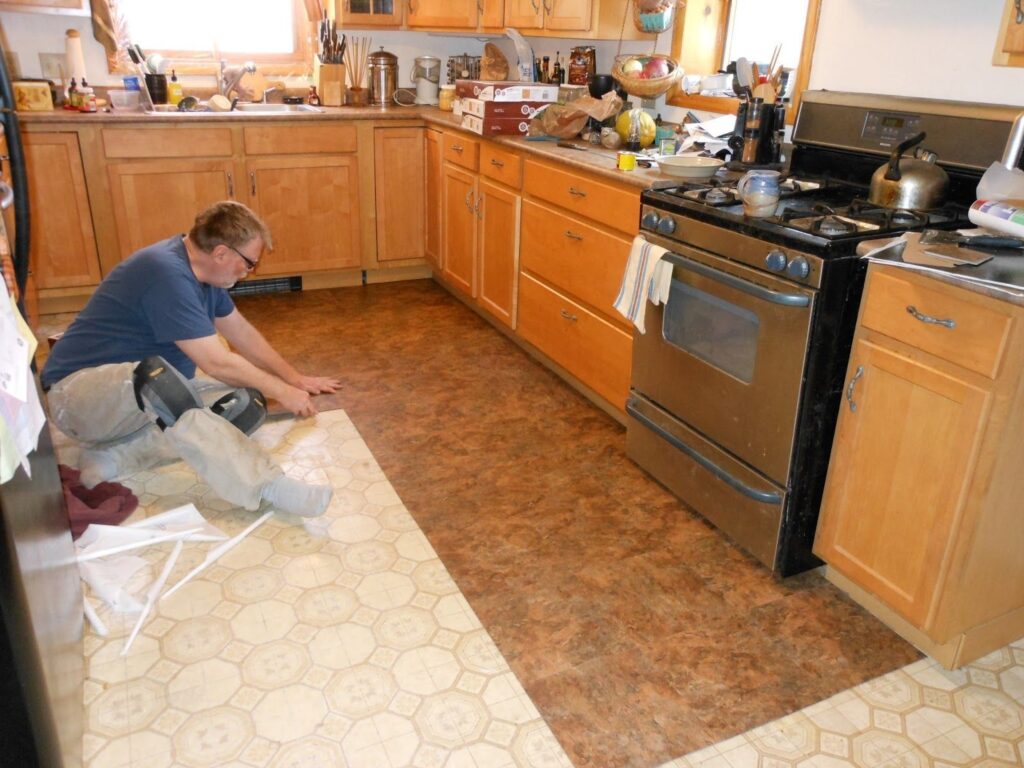
Design Ideas: Transforming Your Kitchen with Sheet Vinyl
Sheet vinyl flooring offers endless design possibilities for transforming your kitchen. Here are some ideas to inspire your next kitchen renovation:
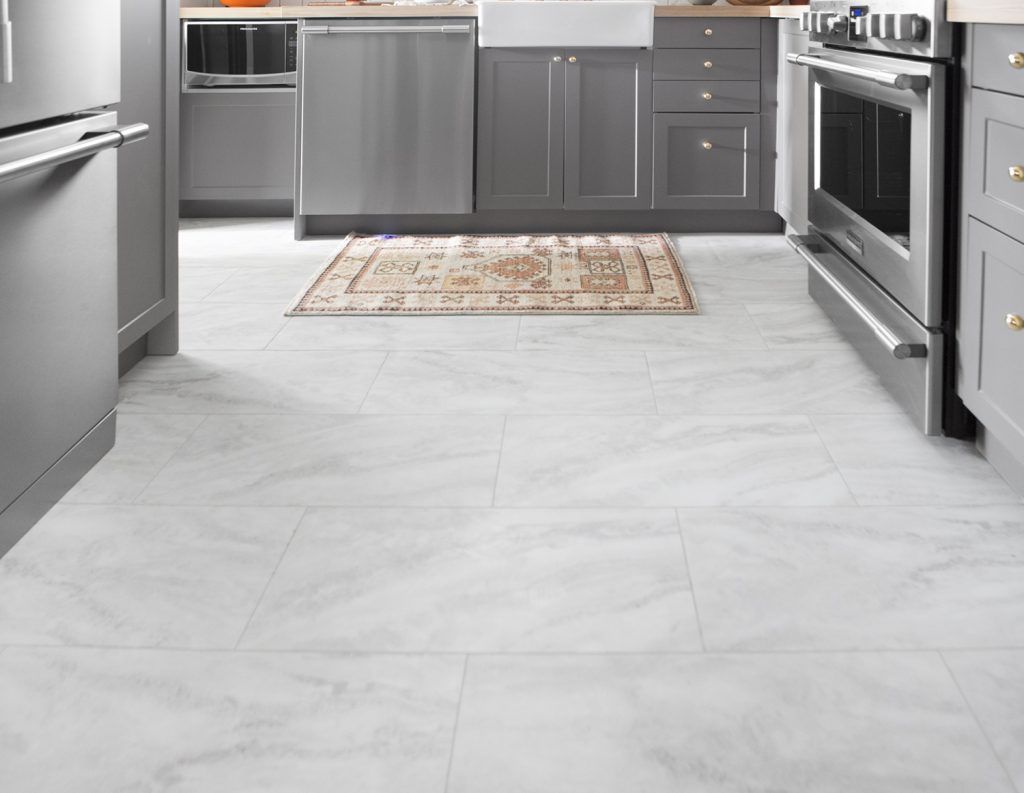
- Wood-Look Vinyl: Create a warm and inviting kitchen with wood-look sheet vinyl. Choose from a variety of wood species, colors, and plank sizes to match your style. Distressed wood vinyl can add a rustic touch, while light-colored wood vinyl can brighten up a small kitchen.
- Tile-Look Vinyl: Achieve the look of tile without the cost and maintenance with tile-look sheet vinyl. Choose from a variety of tile sizes, shapes, and colors, including classic subway tile, modern geometric patterns, and realistic stone designs.
- Patterned Vinyl: Add a touch of personality to your kitchen with patterned sheet vinyl. Choose from a variety of geometric patterns, floral designs, and abstract motifs. Patterned vinyl can be a great way to add color and visual interest to a neutral kitchen.
- Solid Color Vinyl: Create a sleek and modern kitchen with solid color sheet vinyl. Choose from a variety of colors, from classic neutrals to bold statement hues. Solid color vinyl can be a great way to create a minimalist or contemporary look.
- Consider the Overall Aesthetic: When choosing sheet vinyl, consider the overall aesthetic of your kitchen. If you have a traditional kitchen, you may want to choose a wood-look vinyl with a classic design. If you have a modern kitchen, you may want to choose a tile-look vinyl with a sleek, geometric pattern.
Maintenance and Care: Keeping Your Sheet Vinyl Looking Its Best
Proper maintenance and care are essential for extending the life of your sheet vinyl flooring. Here are some tips to keep your floor looking its best:
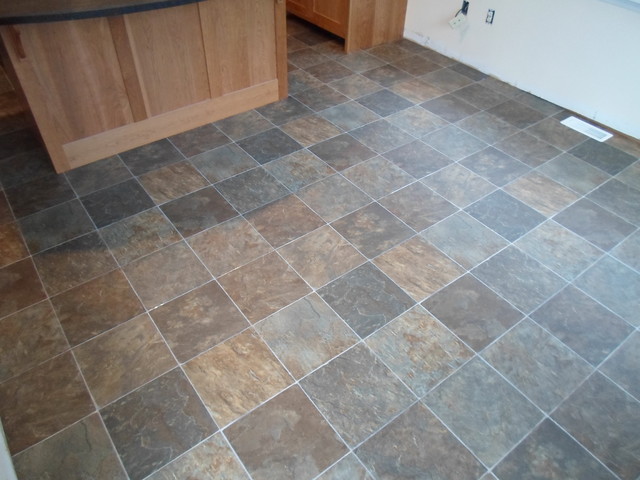
- Regular Cleaning: Sweep or vacuum your sheet vinyl floor regularly to remove dirt and debris. This will prevent scratches and scuff marks.
- Damp Mopping: Mop your sheet vinyl floor with a damp mop and a mild detergent. Avoid using harsh chemicals or abrasive cleaners, as these can damage the surface of the vinyl.
- Spill Cleanup: Clean up spills immediately to prevent staining. Blot up liquids with a clean cloth and wipe the area with a damp mop.
- Floor Protectors: Use floor protectors under furniture to prevent scratches and dents.
- Avoid Sharp Objects: Avoid dragging sharp objects across the floor, as these can tear or puncture the vinyl.
- Professional Cleaning: Consider having your sheet vinyl floor professionally cleaned every few years to remove stubborn stains and restore its shine.
The Cost of Sheet Vinyl: Budgeting for Your Kitchen Flooring
The cost of sheet vinyl flooring can vary depending on the quality of the vinyl, the complexity of the installation, and the location. Here’s a general overview of the cost factors:
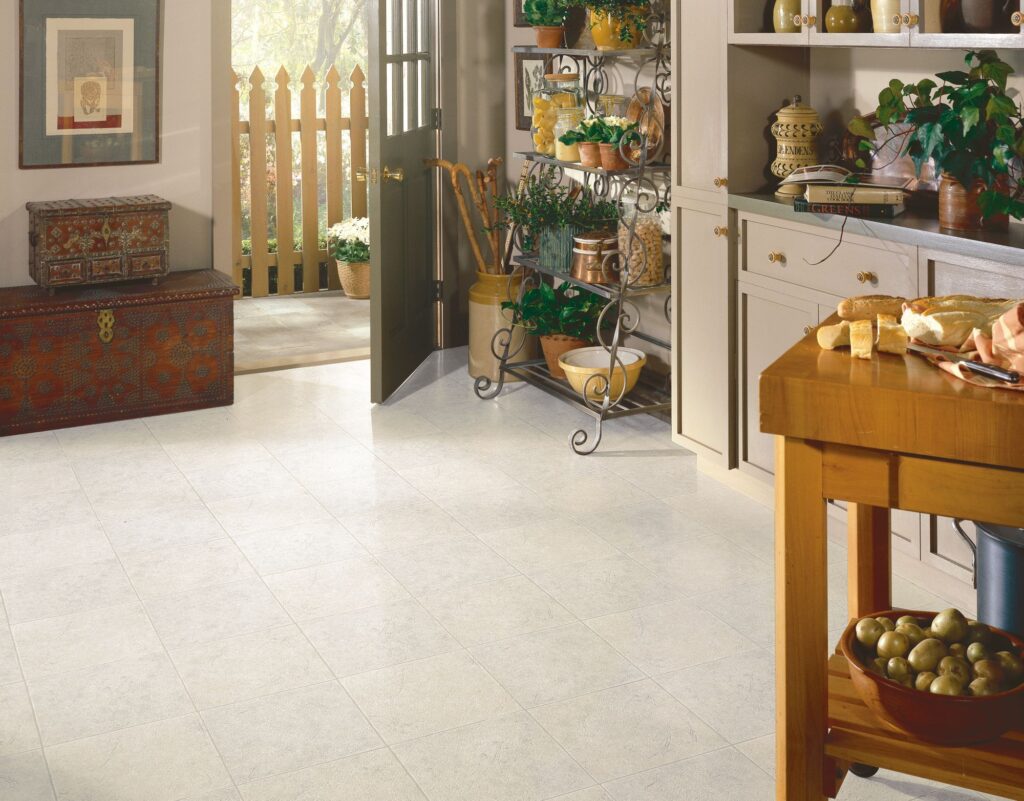
- Material Costs: Sheet vinyl flooring typically costs between $1 and $5 per square foot, depending on the quality and design.
- Installation Costs: Professional installation can cost between $2 and $5 per square foot, depending on the complexity of the job.
- DIY Installation: If you choose to install the sheet vinyl yourself, you’ll need to factor in the cost of tools and supplies, such as a utility knife, measuring tape, adhesive, and seam sealer.
- Total Costs: The total cost of sheet vinyl flooring can range from $3 to $10 per square foot, depending on the factors mentioned above.
When budgeting for your kitchen flooring, be sure to get multiple quotes from different installers and compare prices. Also, factor in the cost of removing your old flooring and preparing the subfloor.
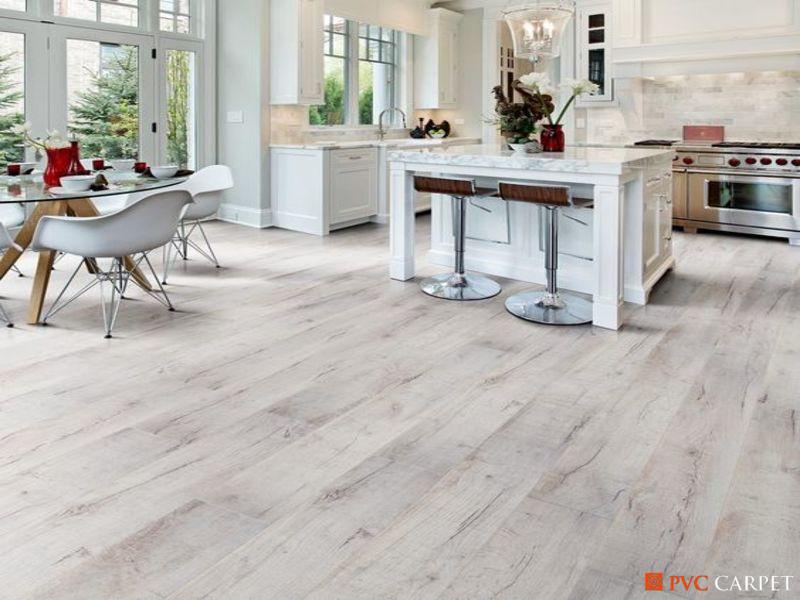
Beyond the Basics: Additional Considerations
Before making a final decision on sheet vinyl flooring for your kitchen, consider these additional factors:
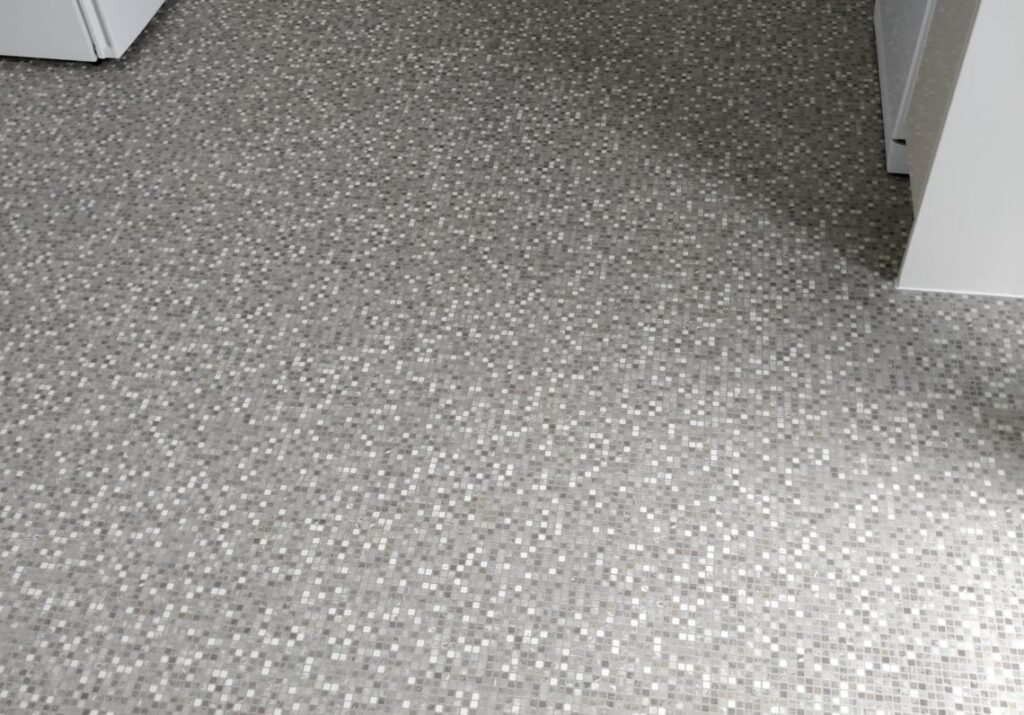
- Warranty: Check the warranty offered by the manufacturer. A longer warranty indicates a higher quality product.
- VOC Emissions: Look for sheet vinyl flooring with low VOC (volatile organic compound) emissions. This is important for indoor air quality.
- Recycled Content: Consider sheet vinyl flooring made from recycled materials. This is a more environmentally friendly option.
- Slip Resistance: Choose sheet vinyl flooring with a good slip resistance rating, especially if you have young children or elderly family members.
- Underfloor Heating: Sheet vinyl is compatible with underfloor heating systems, providing added comfort and warmth in the kitchen.
Sheet Vinyl vs. the Competition: A Quick Comparison
Let’s see how sheet vinyl stacks up against other popular kitchen flooring options:
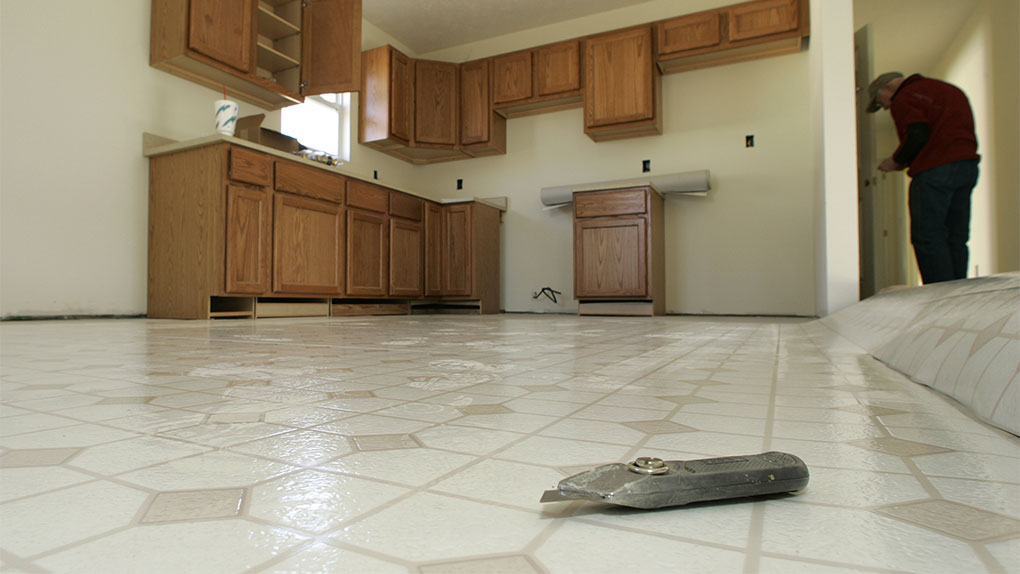
- Sheet Vinyl vs. Tile: Sheet vinyl is more affordable, easier to install, and more comfortable underfoot than tile. However, tile is more durable and offers a more luxurious look.
- Sheet Vinyl vs. Hardwood: Sheet vinyl is more water-resistant and easier to maintain than hardwood. However, hardwood is more durable and offers a more natural look.
- Sheet Vinyl vs. Laminate: Sheet vinyl is more water-resistant than laminate. Laminate is generally more scratch resistant, but high quality sheet vinyl with a thick wear layer can be very durable.
- Sheet Vinyl vs. Luxury Vinyl Tile (LVT): LVT often offers more realistic designs and greater durability due to its thicker construction. However, sheet vinyl typically has fewer seams and can be more water resistant as a result.
Final Thoughts: Is Sheet Vinyl the Right Choice for Your Kitchen?
Sheet vinyl flooring is a versatile, affordable, and practical option for kitchens. Its water resistance, durability, ease of maintenance, and design versatility make it a compelling choice for busy families and budget-conscious homeowners. While it may not offer the same level of luxury as natural materials, modern sheet vinyl can convincingly mimic the look of wood, tile, and stone at a fraction of the cost. By carefully considering the advantages and disadvantages of sheet vinyl and following the installation and maintenance tips outlined in this guide, you can transform your kitchen into a stylish and functional space that you’ll enjoy for years to come. Consider your lifestyle, budget, and aesthetic preferences to determine if sheet vinyl is the perfect flooring solution for your kitchen. When properly selected and installed, sheet vinyl provides unparalleled value for money and transforms one of the most important rooms in your home.
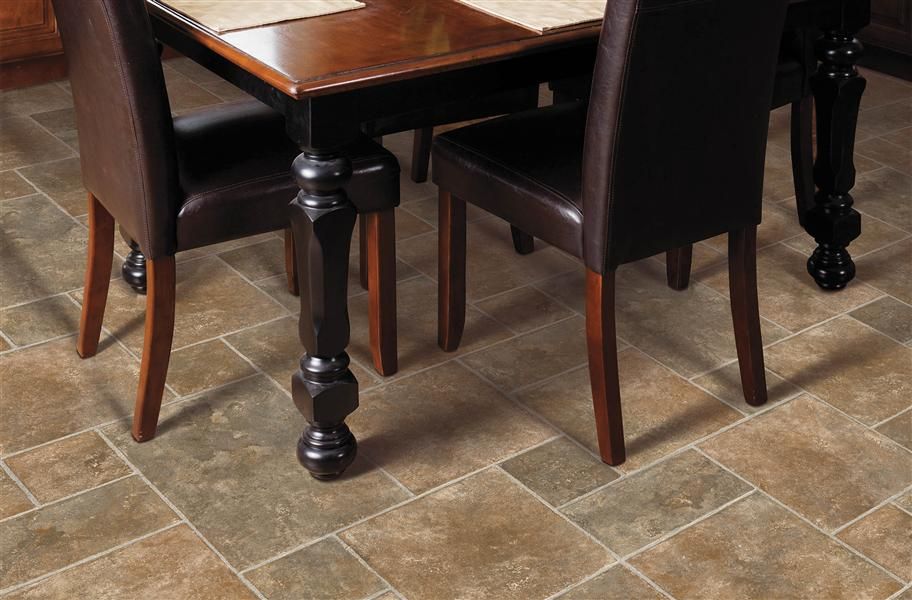
 Nimila
Nimila
